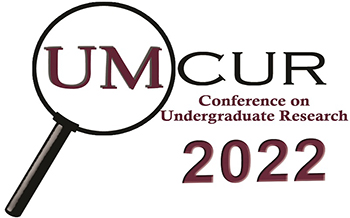To what extent do environmental factors impact willow growth and regeneration?
Project Type
Presentation
Faculty Mentor’s Full Name
Cara Nelson
Faculty Mentor’s Department
Ecosystem and Conservation Sciences
Abstract / Artist's Statement
A necessary objective of stream restoration is to establish willows along stream banks due to their role in bank stabilization, stream shading, and enhancement of biodiversity both within riparian zones and the stream channel. Since willows grow rapidly and spread clonally, their establishment can be an essential factor in the success of restoration projects. However, despite their importance, natural recruitment of willows is sometimes lacking after restoration. For example, we observed no natural willow recruitment on a stream restoration project in the Lolo National Forest (Montana) that involved installing beaver dam analogs, which mimic the pooling effects natural beaver structures have on streams in western watersheds. Although there is extensive literature on willows, there is limited information specifically on willow recruitment and growth post-restoration activities in riparian ecosystems. To fill this knowledge gap, we ask the questions: First, after BDA restoration, what is the rate of willow recruitment by root sprouts or seedlings and what is the abundance of willows in these restored sites? Also, To what extent are the environmental factors of water access, soil compaction, and abundance of competitor species impact the recruitment of willow? We will measure the density of willow by size class along streams in western Montana. We will then relate seedling density to measured environmental factors (soil compaction and water content) and the abundance of other competing plant species. We expect that willow germinant density will be negatively related to soil compaction and the presence of other vegetation competition and positively related to soil saturation. Our findings will contribute insight into the factors influencing willow recruitment and can be applied to develop practices to improve willow establishment and growth after restoration, which would create conditions that support wildlife and plant communities and connectivity within focal watersheds.
Category
Life Sciences
To what extent do environmental factors impact willow growth and regeneration?
UC 331
A necessary objective of stream restoration is to establish willows along stream banks due to their role in bank stabilization, stream shading, and enhancement of biodiversity both within riparian zones and the stream channel. Since willows grow rapidly and spread clonally, their establishment can be an essential factor in the success of restoration projects. However, despite their importance, natural recruitment of willows is sometimes lacking after restoration. For example, we observed no natural willow recruitment on a stream restoration project in the Lolo National Forest (Montana) that involved installing beaver dam analogs, which mimic the pooling effects natural beaver structures have on streams in western watersheds. Although there is extensive literature on willows, there is limited information specifically on willow recruitment and growth post-restoration activities in riparian ecosystems. To fill this knowledge gap, we ask the questions: First, after BDA restoration, what is the rate of willow recruitment by root sprouts or seedlings and what is the abundance of willows in these restored sites? Also, To what extent are the environmental factors of water access, soil compaction, and abundance of competitor species impact the recruitment of willow? We will measure the density of willow by size class along streams in western Montana. We will then relate seedling density to measured environmental factors (soil compaction and water content) and the abundance of other competing plant species. We expect that willow germinant density will be negatively related to soil compaction and the presence of other vegetation competition and positively related to soil saturation. Our findings will contribute insight into the factors influencing willow recruitment and can be applied to develop practices to improve willow establishment and growth after restoration, which would create conditions that support wildlife and plant communities and connectivity within focal watersheds.
